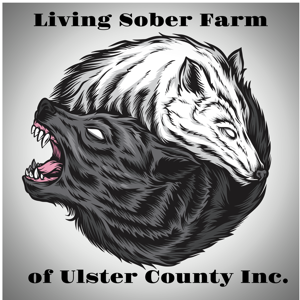About Statistics
Everywhere you turn to find information, you will find statistics which will surely confuse the heck out of you. That's mostly because of bias and the incompleteness of the data.
- Government statistics have a political motivation to show that they are defining problems and targeting resources to solve those problems. Bias says that the government solutions will choose the most economical and short-term solutions over the long-term and possibly more beneficial solutions.
- Health insurers are also biased to choose the most economical and short-term solutions over the long-term and likely more beneficial solutions. Insurance lobbies pay out a lot of money to convince governments to use their best solutions to fight opioid abuse. They do this through the use of statistics. When government mandates are imposed on the healthcare insurance industry, statistics are presented to support the least possible services allowable that will maximize profits. In cases of mental health and addiction services, this is being accomplished by sub-contracting those services to the lowest bidder, who in turn minimizes services to maximize their own profits.
- Pharmaceutical companies use statistics to convince governments, health insurance companies, the medical profession and ordinary people that they have the right medications to fix the problems. They are biased to make their shareholders the most profits. They have accomplished this before and will continue to do so. If you have not read the book, "Dopesick" by Beth Macy, give it a try. This history of greed and profits over the welfare of its patients is eye opening. You can also watch the documentary series of the same name, on HULU starring Michael Keaton as a doctor in a small town in West Virginia, a state ravaged by deaths due to prescription opioids.
In each statistical group, the narrative continues to be based around preventing overdose deaths and common sense would tell you that yes, all of the evidence based tools we implement have reduce the harm from overdose death. But statistically while overdose deaths are going down, overdoses are rising. We need to ask what is being done to treat the addiction and how are we addressing the population for whom these harm reduction tools do not help.
How addictive are opioids? - It generally one to two weeks to become physically dependent on an opioid but that varies by individual. "Wellness Matters", Hopkins Medicine.orgAug, 2018
Statistics on the Efficacy of Buprenorphine:
In a recent study, "Who is Most Likely to Follow Through With a Prescription for extended-Relief Buprenorphine?", by the Recovery Research Institute, it was found that:
- Approximately 6 million people in the US meet the criteria for in opioid use disorder in 2022 and there have been persistant year after year increases in opioid disoder mortality.
- Despite the fact the medications such as buprenorpine are helpful, in 2022 only an estimated 18% of people diagnosed have used a medication they were prescribed. Referring to reasons, the study suggests that other factors(eg., housing instability, mental health difficulties, environmental cues/triggers, etc.) get in the way.
- For those who received a prescription for extended release medication in an outpatient specialty clinic, only half actually had at least one dose and only one third actually stayed on it for at least six months.
- Data shows that extended release formulation of buprenorphine does as well as daily sublingual yet, about half of individuals prescribed this discontinue within one year.
- Found that those with private insurance relative to public, were more likely to remain in treatment at the 6 month follow-up.
- Those prescribed extended release due to an "unstable course of remission" ( a more severe diagnosis), were 4.8 times less likely to be retained in treatment. They were also less likely to initiate the recommended treatment.
- More detailed statistics can be found at the National Library of Medicine Heil J, Salzman M, Hunter K, Baston KE, Milburn C, Schmidt R, Haroz R, Ganetsky VS. Evaluation of an injectable monthly extended-release buprenorphine program in a low-barrier specialty addiction medicine clinic. J Subst Use Addict Treat. 2024 Jan;156:209183. doi: 10.1016/j.josat.2023.209183. Epub 2023 Oct 23. PMID: 37879433.
Opioid Deaths in New York State (dated 2023) New York State puts out an annual opioid data report. This link will take you to the latest data report. You will note that Ulster County is consistantly one of the highest counties in the state (not counting the boroughs of New York City). According to this report:
- In 2021, Ulster County recorded 32 infants born to addicted mothers who went through withdrawal.
- In 2021, Ulster County recorded of 203 of 178,510 (population) emergency visits involving any opioid.
- In 2021, Ulster County recorded 72 of 178,510 (population) deaths involving opioids and non-fatal opioid related deaths.
The Dangerous List of Opioids Weakest to Strongest
According to the National Library of Medicine for the National Center for Biotechnology information, "WHO Guidelines for the Pharmacologicical and Radiotherapeutic Management of Cancer Pain in Adults and Adolescents", fentanyl has the highest potency of all opioids relative to morphine. Buprenorphine is the second highest. Heroin is not easily ranked as it is not a legal substance in the US but according to the United Nations, it is estimated to be at least 10 times more potent than morphine making this less potent than buprenorphine. Heroin on the street to day is most likely laced with fentanyl as it is a much cheaper substance to manufacture and to purchase. From strongest to weakest:
- Fentanyl
- Buprenorphine
- Hydomorphone
- Methadone
- Oxycodone
- Hydrocodone (not in the UK)
- Tapentadol
- Pethidine
- Codeine Dihydrocodeine
Cost of Drug Treatment in New York, According the National Center for Drug Abuse Statistics (NCDAS), of all 50 states, New York treats the most patients of substance use disorder.
The New York State Overdose Death Dashboard by the Office of Addiction Services and Spport (OASAS) has a lot of statistical data to help you understand the scope of the overdose crisis in NY. While looking this over, you will notice that:
- all overdoses are not from opioid substances,
- medication assisted treatment (MAT) only helps opioid related dependency.
- there were 77 overdose deaths in Ulster County, a population of 182,319.

